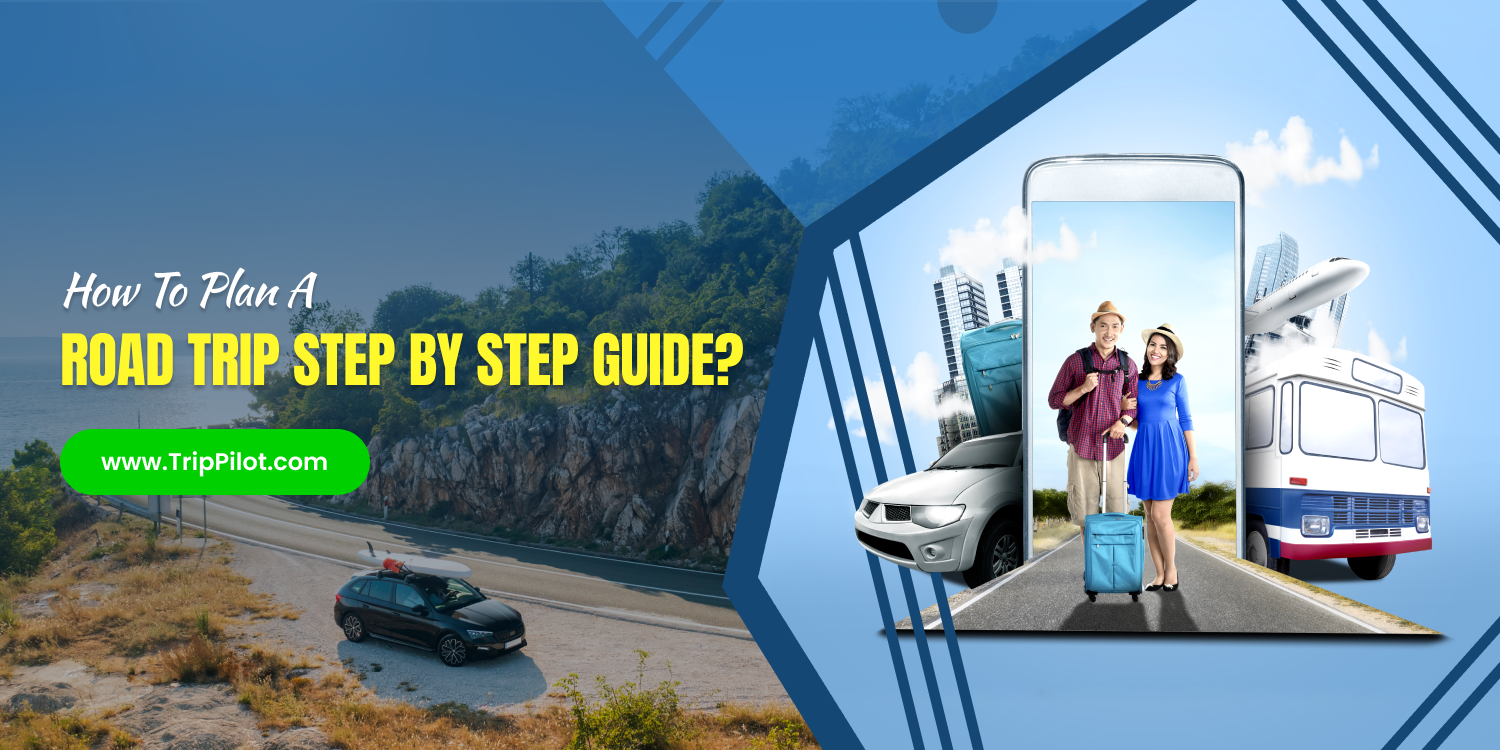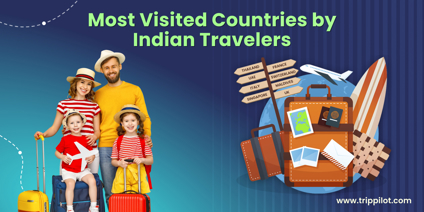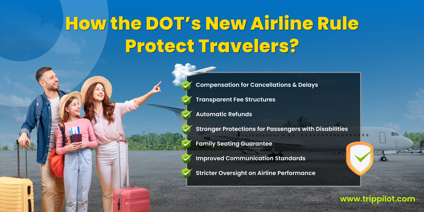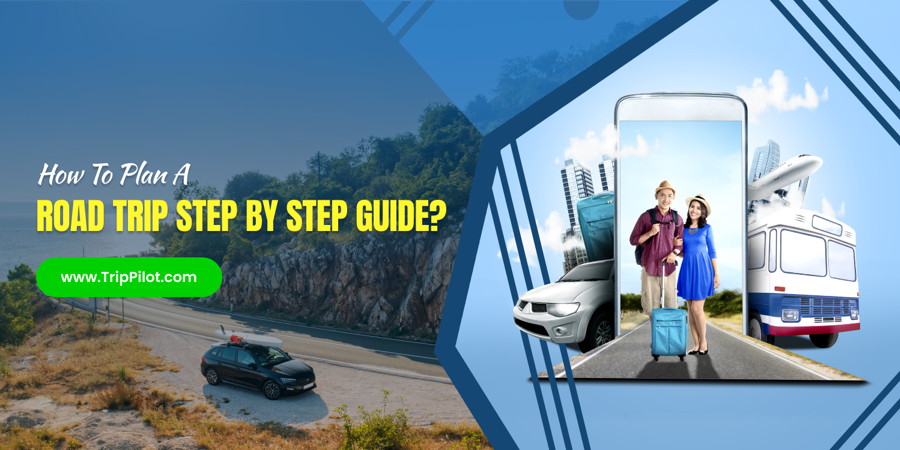The open road calls, mountain passes, coastal drives, and desert highways promise freedom, adventure, and unforgettable memories. But behind every dreamy road trip lies a critical truth: poor planning can quickly turn wanderlust into a logistical nightmare. Missed stops, bad weather, and route detours can drain your energy and wallet. That's why having a solid road trip strategy matters.
Whether you're a solo traveler or planning a family getaway, using smart tools like TripPilot’s AI-powered travel planner can transform your chaotic checklist into a tailored, stress-free adventure.
Key Takeaways
- Learn how to plan a road trip from scratch: routes, budget, and gear
- Discover essential apps, safety checks, and packing tips
- Save time with AI tools like TripPilot’s free vacation trip planner
- Build custom itineraries with stops, stays, and sightseeing
- Reduce costs and avoid common travel mistakes
- Travel confidently with offline access, fuel planning, and weather alerts
Table of Contents
Step 1: Define Your Road Trip Goals.
Step 2: Choose Your Route Wisely.
Step 4: Book Accommodation in Advance (or Don’t)
Step 7: Plan Food and Rest Stops.
Step 8: Go Digital but Stay Flexible.
Step 9: Stay Safe and Informed.
Step 10: Document the Experience.
Step 1: Define Your Road Trip Goals
Before mapping your route, ask: What’s the purpose of your trip? Is it a relaxing coastal drive, a national park trek, or a food-fueled journey?
Cultural Insight:
In the U.S., road trips are often a rite of passage. In Europe, they’re ideal for cross-country exploration. Australia’s vast Outback or India’s Golden Triangle offers completely different dynamics.
Tip:
Use TripPilot’s “Build a Custom Trip” feature to set your trip theme (scenic, budget, cultural), helping the AI optimize stops and stays accordingly.
Step 2: Choose Your Route Wisely
A great route balances drive time, scenic beauty, and attractions. Consider:
- Highway 1, USA: Ocean views, cliffside towns
- Garden Route, South Africa: Wildlife and wine
- Great Ocean Road, Australia: Twelve Apostles to lush rainforests
Travel Tip:
Avoid overstuffing your itinerary. Driving 8+ hours daily can ruin the trip. Aim for 3–5 hours/day with time to explore.
Step 3: Decide Your Budget
Break it into categories:
Fuel
One of the biggest expenses on any road trip is fuel. Keep in mind that prices can vary widely depending on location, so it’s worth planning refueling stops in advance. Consider using apps that track fuel prices along your route to ensure you’re getting the best deal. Also, maintaining a steady speed and avoiding unnecessary idling can help stretch your fuel budget.
Food & Snacks
From quick roadside snacks to hearty meals, food costs can add up fast. Stock up on non-perishable snacks like nuts, granola bars, and dried fruit to avoid overpriced convenience store purchases. When possible, prepare your own meals or opt for local diners instead of high-end restaurants. Not only will you save money, but you’ll also experience authentic local flavors.
Accommodation
Where you sleep can make or break your budget. Options range from camping under the stars to staying in budget motels or hostels. If you plan ahead, you can find great deals on last-minute booking apps. Consider mixing up your stay splurge on a nice hotel once in a while, then offset it with more affordable nights in budget accommodations.
Attractions & Entrance Fees
Whether it’s a national park pass, museum ticket, or guided tour, entrance fees can quickly eat into your funds. Research free or low-cost attractions along your route, such as scenic hiking trails, public beaches, or cultural festivals. Often, the best experiences don’t cost a thing.
Emergencies
Unexpected costs like a flat tire, minor medical needs, or last-minute lodging can pop up anytime. Set aside an emergency fund before you leave so you’re not caught off guard. Also, consider travel insurance if your trip is long or involves more remote areas.
Money-Saving Hacks
- Camp or use budget motels: Camping not only saves money but also adds an adventurous twist to your journey. Budget motels can be a comfortable and affordable alternative. Budget-friendly travel
- Cook meals using hostel kitchens: Preparing your own meals cuts down costs significantly. Hostel kitchens or campsite grills are perfect for this.
- Use gas tracking apps: These help you find the cheapest fuel stops along your route, potentially saving you a significant amount over the course of your trip.
It estimates costs and highlights budget-friendly travel options, integrating nearby grocery stops, free attractions, and affordable stays.
Step 4: Book Accommodation in Advance (or Don’t)
For Flexibility
If your travel style leans toward spontaneity, consider booking only your first few nights of accommodation. This approach gives you the freedom to adjust your route, stay longer in places you love, or change destinations altogether if something unexpected catches your interest. It’s perfect for road trips or slow travel, where the journey matters just as much as the destination.
For Peak Season Trips
When traveling during high-demand times such as summer holidays, major festivals, or ski season planning ahead is essential. Popular hotels, resorts, and unique stays can sell out months in advance, so secure your bookings early to avoid last-minute price spikes or limited options.
Pro Tip
Blend different types of stays to balance your budget and enhance your experience. A mix of hotels for comfort, homestays for authentic local interaction, and campgrounds for budget-friendly adventure keeps your trip exciting and varied. This approach can also help you connect with different kinds of people along the way.
See AI-curated lodging options with TripPilot’s itinerary builder filter by rating, price, or unique stays like treehouses or farmstays.
Step 5: Prepare Your Vehicle
Ensuring your vehicle is fully prepared through proper maintenance, safety checks, and essential equipment can make the difference between a smooth, enjoyable trip and one disrupted by unexpected breakdowns or delays.
Checklist:
- Oil Change & Tire Check
Ensure your vehicle’s oil is fresh and tires are in good shape, including proper inflation. Don’t forget to check your spare tire as well, having one in poor condition defeats the purpose. - Emergency Kit (spare tire, tools, flashlight)
A well-stocked emergency kit is a must-have. Include basics like a jack, lug wrench, jumper cables, flashlight with extra batteries, and a reflective safety vest. These small items can make a huge difference if trouble strikes. - Paper Map Backup
While GPS is convenient, technology can fail in remote areas or dead zones. Carry a paper road atlas or printed maps as a reliable backup. - Power Banks & Chargers
Keeping your devices charged is essential for navigation, communication, and entertainment. Bring multiple chargers, including car adapters, and at least one fully charged power bank for emergencies.
Cultural Insight:
In rural areas across the U.S., Canada, or Australia, fuel stations may be sparse. Prepare accordingly.
Step 6: Pack Smart
Essentials to Pack:
- Travel Documents & Licenses
Always carry valid identification, driver’s license, vehicle registration, and insurance papers. If traveling internationally, keep your passport, visa (if required), and digital backups stored securely online. - Water Bottles & Reusable Containers
Staying hydrated on the road is non-negotiable. A sturdy, reusable water bottle reduces waste and saves money, while reusable food containers are perfect for packing snacks or leftovers. - First-Aid Kit
Even minor cuts, headaches, or motion sickness can slow you down. Pack a basic kit with bandages, antiseptic wipes, pain relievers, and any personal medications you may need. - Weather-Appropriate Clothing
Check the forecast for your route and destinations. Layering is key for changing conditions, while waterproof jackets and sun protection gear help you adapt quickly. - Offline Maps & Entertainment
Download maps and playlists or podcasts ahead of time so you’re covered if you lose signal. Books, travel games, and offline-friendly apps help keep downtime fun.
TripPilot Packing List:
When you build your plan with TripPilot, it auto-generates a customized packing checklist based on location, climate, and trip type.
Step 7: Plan Food and Rest Stops
Food is one of the joys of travel, but it’s also an easy place to overspend or compromise on quality. A travel planning ensures you enjoy delicious meals without blowing your budget.
- Pin Local Diners or Food Trucks
Before you set off, bookmark small-town diners, roadside cafés, and local food trucks along your route. They often serve authentic regional dishes at far lower prices than chain restaurants, and you’ll get a taste of local culture too. - Pack Dry Snacks and Fruits
Stock up on easy-to-carry snacks like trail mix, granola bars, crackers, or fresh fruit. These keep hunger at bay between stops and help you avoid overpriced, less healthy convenience store options. - Research Picnic Spots or Rest Areas
Check for scenic rest stops, parks, or viewpoints where you can enjoy a packed meal with a view. A simple picnic can turn an ordinary lunch break into a mini-adventure.
It highlights top-reviewed food stops en route, including dietary filters (vegan, gluten-free, local favorites).
Step 8: Go Digital but Stay Flexible
Have your digital tools ready:
- Navigation Apps (Google Maps, Waze)
These apps are invaluable for real-time traffic updates, route optimization, and alerts on accidents or road closures. Waze is great for crowd-sourced tips, while Google Maps often excels in accuracy and coverage. - Offline Maps
Download maps for your entire route so you’re covered in areas with poor or no cell service. This simple step can prevent wrong turns in remote locations. - Road Trip Playlists
Curate playlists or download podcasts ahead of time to keep the mood lively and the miles flying by. Having your own soundtrack makes even long stretches of road more enjoyable. - Emergency Contacts
Save important numbers such as roadside assistance, accommodation bookings, and family or friends both in your phone and on paper. In an emergency, quick access can make all the difference.
The AI travel planner even works offline, making it perfect for navigating remote zones where the signal is weak or unavailable.
Step 9: Stay Safe and Informed
Road Safety Tips:
- Rotate Drivers if Possible
Sharing driving duties helps prevent fatigue and keeps everyone fresh. Even a short break in the passenger seat can boost alertness when you get back behind the wheel. - Rest After Every 2–3 Hours
Prolonged driving without breaks increases the risk of drowsiness and reduced concentration. Plan to stop for a quick stretch, snack, or bathroom break every couple of hours. - Avoid Nighttime Rural Driving
Rural roads at night can be more dangerous due to reduced visibility, wildlife crossings, and limited roadside assistance. If possible, schedule your driving for daylight hours. - Check Weather and Road Closures Daily
Conditions can change quickly, especially in mountainous or coastal regions. A quick morning check for weather updates and closure alerts can help you reroute in time and avoid delays.
Safe travel tips during the holidays include planning your route in advance, staying updated on weather conditions, keeping emergency supplies handy, and allowing extra time for delays so you can enjoy a stress-free and secure journey.
Step 10: Document the Experience
A road trip isn’t just about reaching your destination, it’s about the moments in between. Keep a travel journal to jot down funny encounters, hidden gems, and personal reflections. Snap plenty of photos of both the big sights and the small details, like a cozy roadside café or a stunning sunset. If you enjoy creating, consider vlogging your journey to share the experience with friends, family, or future travelers. Long after the trip is over, these memories will transport you back to the open road.
Traveler Insight:
Many travelers create digital scrapbooks or blogs. With TripPilot, export your itinerary and daily notes for sharing or keepsakes
Frequently Asked Questions
How do I create a custom road trip itinerary?
Use tools like TripPilot to input destinations, duration, and preferences. The AI will generate a custom travel plan with drive times, attractions, fuel stops, and more.
How much does a road trip typically cost?
Costs vary. For a week-long trip in the U.S., expect $500–$1,500 per person depending on transport, stays, and food choices. Use TripPilot’s budget estimator to plan ahead.
What is the best app to plan a road trip?
TripPilot stands out for its AI-based itinerary planner, offline access, safety alerts, and personalized recommendations.
Should I plan every detail of my road trip?
Not necessarily. Plan key stops and bookings but leave room for spontaneity. TripPilot helps balance structure and flexibility.
Is TripPilot free to use?
Yes! TripPilot offers a free vacation trip planner with options to upgrade for premium travel insights.
Conclusion
Planning a road trip doesn’t have to be overwhelming. With the right steps and smarter tools you can craft a smooth, exciting, and memorable journey. From route building to safety checks, TripPilot’s AI-powered planner supports every part of your adventure. Embrace the freedom of the road and take the stress out of planning.






